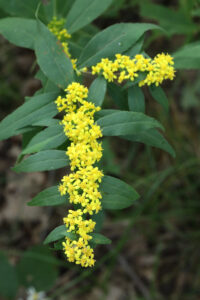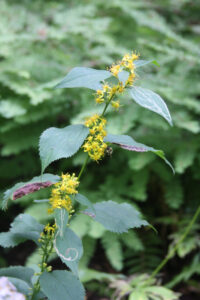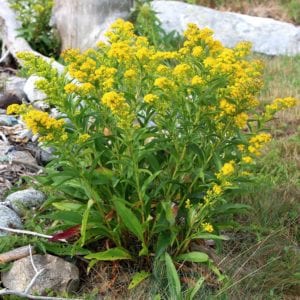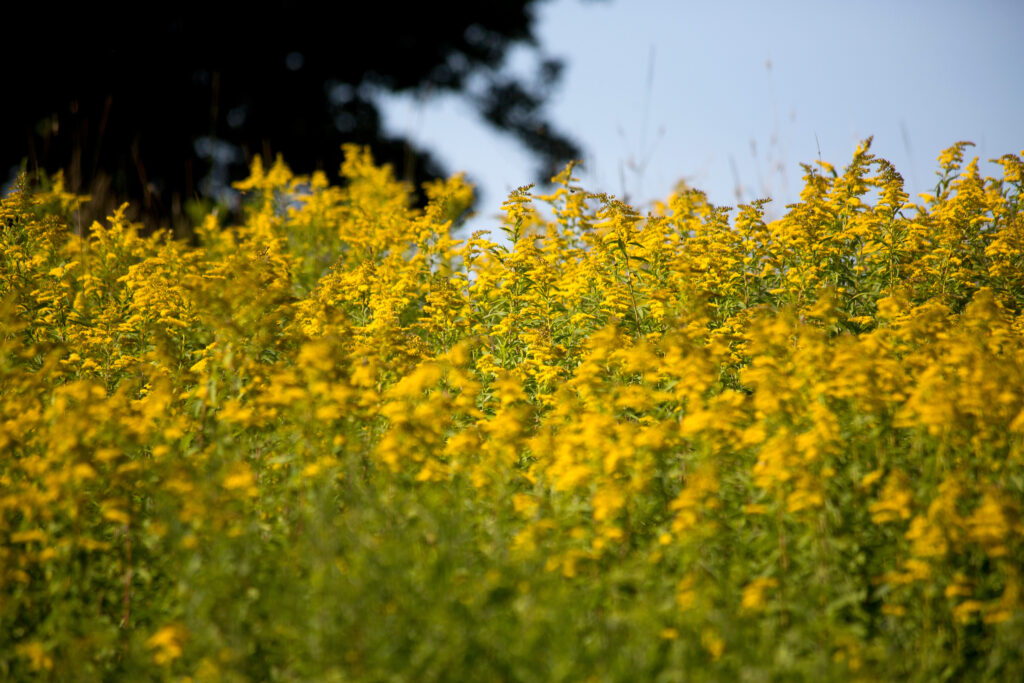
September is the new May for planting. In Maine, late summer into fall is the best time to get native plants in the ground. Benefits of fall planting include cooler temperatures, increased (continued) rainfall leading to reduced watering, and early spring growth. If you’re wondering what to add to your landscape, now is a great time to take inspiration from wild places around us. At Maine Audubon’s Gilsland Farm the meadows are awash in a sea of goldenrod, which is one of if not the most important herbaceous keystone species in Maine. See below for a list of keystone native species to consider adding to support fall wildlife.
Online plant sale continues through September! Our Native Plant Sale has been up and running since June, and we will continue to have plants available for sale on our website through September. Final pick up dates will be September 28 & 29. Shop here >
Fall Keystone Herbaceous Perennials
Goldenrods: Belonging to the solidago genus, goldenrods are especially attractive to bees and other pollinators, blooming August into September.
Asters: a great accompaniment to goldenrods, asters known for their daisy-like flowers bloom late into the season preferring cooler temperatures. While many are found in sunny grassland environments, some such as white wood and blue wood asters grow well in partial shade.
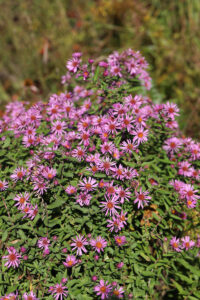 Photo: Dan Jaffe Wilder | 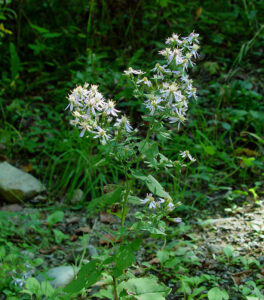 Photo: Arthur Haines | 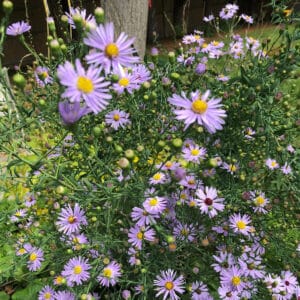 |
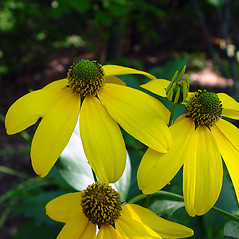
Photo: Arthur Haines
Rudbeckia laciniata (Cutleaf Coneflower)
Introduced earlier this season as Maine Audubon’s plant of the year, Rudbeckia laciniata, Cutleaf Coneflower, or Sochan, should by now have reached maturity at 4-8’ tall with a prolonged bloom period from early August through late September. It’s a fantastic choice in a variety of settings ranging from borders and hedges, to tall meadow plantings.
Consider adding some fall fruiting native shrubs to support wildlife!
Viburnum lentago (Nannyberry)
This lovely shrub provides year round wildlife value. While its blossoms are a great food source for early pollinators, it’s the late season berries that really make this shrub shine. The berries are a vital food source for birds like Cedar Waxwings and Ruffed Grouse.
Aronia melanocarpa (Chokeberry)
A densely growing shrub, chokeberry offers great cover for small mammals and nesting birds. The berries boast an impressive array of antioxidants, which is reflected in their vibrant hues. Wildlife will feast on the berries, inadvertently dispersing seeds throughout the landscape.
Prunus maritima (Beach Plum)
Thriving in sandy and salt-laden soils, this hardy shrub plays a pivotal role in stabilizing shorelines. Its fruit, small nickel to quarter sized plums, are both edible and palatable to humans, though it’s also a favorite of many birds!
And remember, you can learn more about native plants at Maine Audubon’s Native Plant Finder online at mainenativeplants.org.
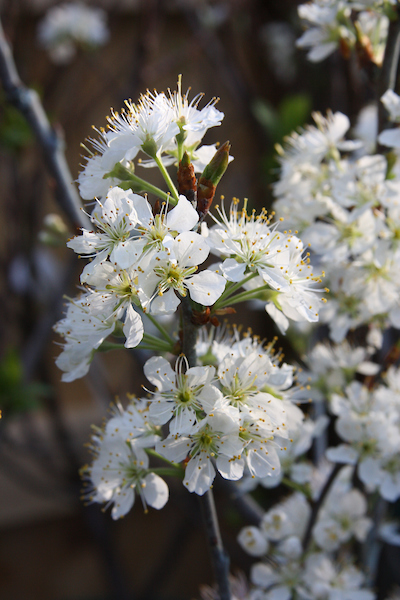
Photo: Dan Jaffe Wilder

